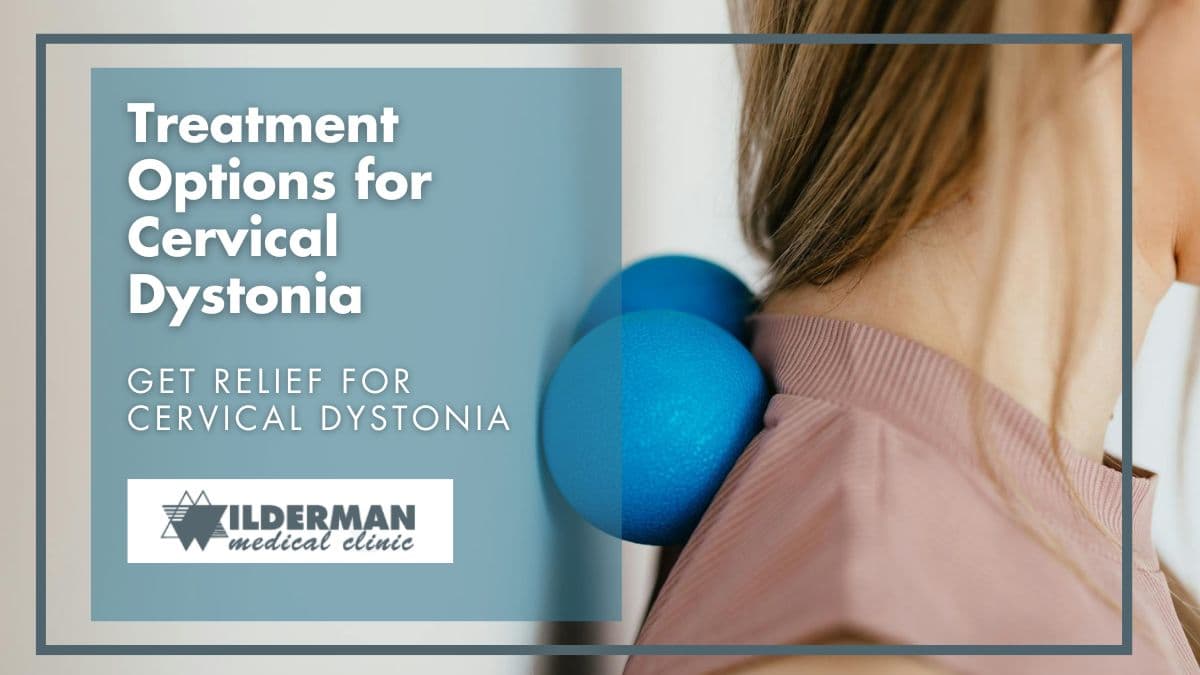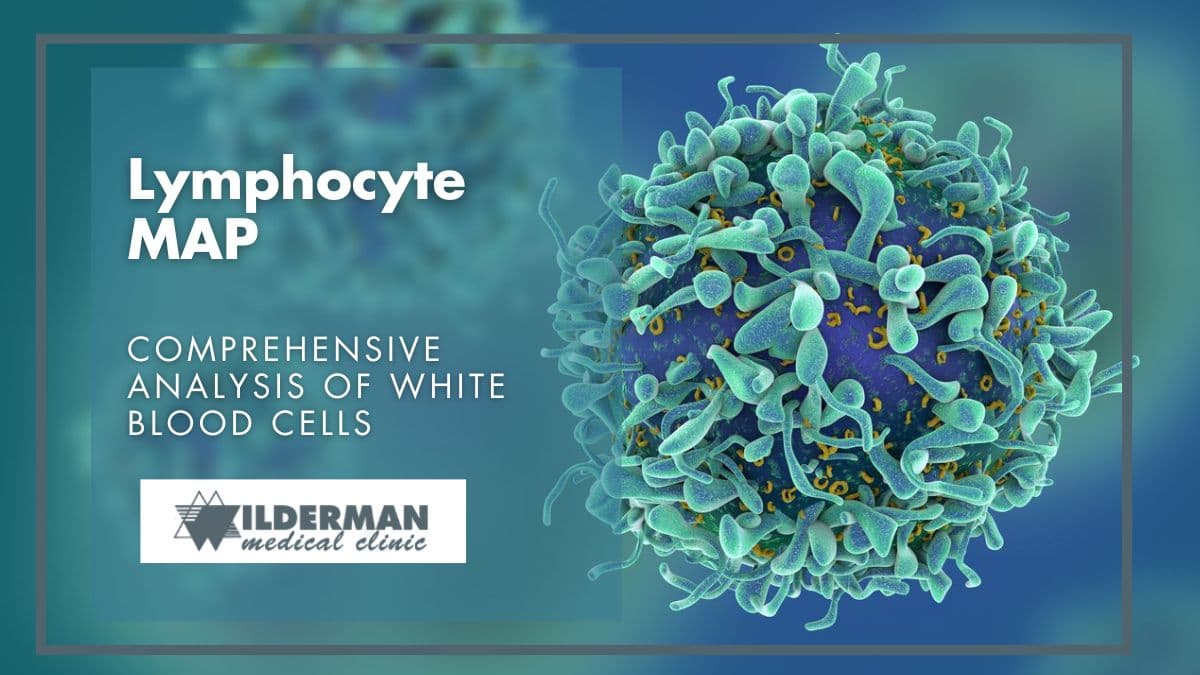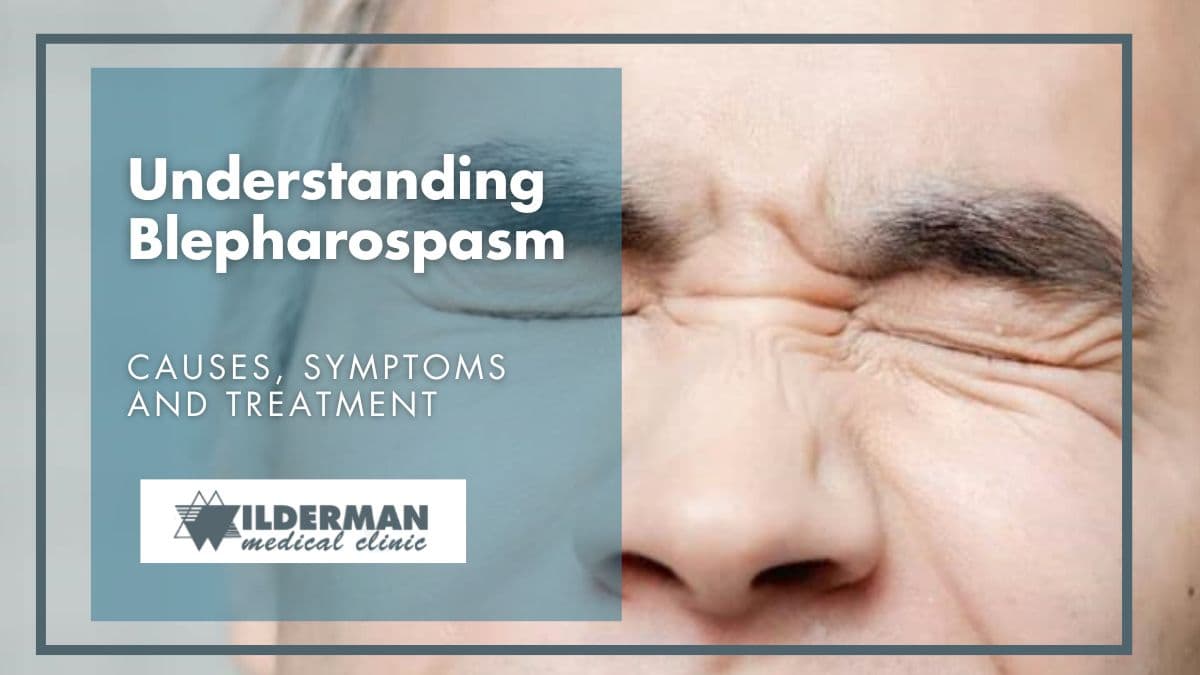Treatment Options for Cervical Dystonia

Cervical dystonia is a neuromuscular disorder that causes painful and sudden muscle spasms or movements in the neck. It has a sudden onset, but the intensity of the muscle spasms will gradually intensify if left untreated.
Botulinum toxin injections are considered the most effective treatment for cervical dystonia.
Other treatment options, such as physiotherapy, medications, and/or neuromodulation therapy, can be added to help resolve cervical dystonia symptoms. If no other treatment can provide adequate relief for cervical dystonia symptoms, surgery to cut the responsible nerves can be considered.
What is Cervical Dystonia?
Cervical dystonia (CD), also known as spasmodic torticollis, is the most common type of dystonia and can co-exist with other types of dystonia.
There are two types of CD: acquired and primary. Recent research has highlighted the possibility of a genetic factor in the development of CD (Siokas et al., 2018). Women/AFAB between 30 and 50 are the most common individuals affected by CD (Kilic‐Berkmen et al., 2021).
The most common causes of acquired CD are traumatic head, neck, or upper spine injuries. Some medications, such as anti-seizure drugs, may also cause this type of CD. However, the primary CD is thought to be caused by a genetic issue.
The symptoms of CD start gradually before getting worse if left untreated. The main symptom of CD is twisting of the head towards the chin, shoulder, or straight down. It may disappear on its own before returning with greater intensity.
Treatment Options for Cervical Dystonia
While there are guidelines for the treatment of CD, there needs to be an individualized treatment plan based on the individual’s symptoms and their severity (Bledsoe et al., 2020).
Treatment for CD may be multimodal and range from botulinum toxin injections (BTI) to deep brain stimulation surgery in severe cases. Muscle relaxants may be helpful in some cases, while others will find physiotherapy to be helpful. Most CD treatments will be composed of multiple treatment options.
Botulinum Toxin Injections
The use of BTI for CD has been approved since 2000 and is considered the best treatment for this disorder (Jankovic et al., 2023). Treating CD with BTI has been shown to reduce pain, and the risk of long-term and permanent side effects of untreated CD, and improve the overall quality of life of patients.
BTI is the introduction of a safe and purified strain of Clostridium botulinum, the bacteria responsible for botulism food poisoning, into the body through an, or a series of, injection(s). These bacteria create a substance that acts on the muscle receptors and prevents acetylcholine, a neurotransmitter, from binding to its receptors (Pana & Saggu, 2023). This causes muscle paralysis. Through this effect, strained muscles can rest and recover from any injuries that may be causing pain.
While somewhat invasive, BTI is safe and recommended as the first treatment in a CD treatment plan.
Physiotherapy
Physiotherapy has long been suggested as an addition to BTI treatments for CD, however, there are limited studies concerning the type, length, and specific exercises best suited to treat it (Loudovici-Krug et al., 2022). On its own, physiotherapy has very limited effects on CD. When combined with BTI treatments, physiotherapy, whether a specialized CD plan or a standard neck physiotherapy treatment plan, provided significant pain relief.
There are limited indications that physiotherapy can help reduce the symptoms of CD itself; however, some research has shown that it can decrease the intensity of muscle spasms and the long-term impact of CD on the neck and shoulder muscles. This leads to an improvement in a person’s overall quality of life.
Physiotherapy exercises should be done, at least initially, under the supervision of a trained physiotherapist. Once a treatment plan is set, it can be done at home.
Medication
There are a few classes of medications that are commonly prescribed to help treat CD (Bledsoe et al., 2020). The most common oral medication used to help treat CD is anticholinergic medication, which acts similarly to BTI except on a systemic level.
Other possible medications used to treat CD are GABA, a neurotransmitter that lessens the reactivity of neurons to brain signals, agonists; benzodiazepines, which reduce the activity of the nervous system; dopaminergic, medications that affect dopamine, another neurotransmitter; and muscle relaxants.
Neuromodulation
Neuromodulation is a type of treatment that uses electric signals to regulate nerve activities. It can be invasive or non-invasive. In the treatment of CD, transcranial magnetic stimulation (TMS), a non-invasive treatment that uses magnetic fields to activate and reset neurons in the desired brain area, and deep brain stimulation (DBS), an invasive treatment that implants one or more electrodes into the skull to provide electrical pulses, are to be considered.
While there are many case studies showing that the use of TMS helps reduce the symptoms and pain relating to CD, there is limited research on the effectiveness of TMS in large groups of CD patients (Bledsoe et al., 2020). Further research is needed.
DBS can help reduce the severity of CD symptoms and improve the overall quality of life (Kaelin‐Lang et al., 2020). However, it has little to no impact on the pain levels caused by CD.
Surgery
If none of the above treatment options provide adequate results, cutting through the nerves believed to be responsible for CD can be considered a last resort (Horisawa et al., 2022). The surgery, often referred to as denervation, disconnects the nerve(s) responsible for the abnormal signals causing CD.
Wilderman Medical Clinic
Our Clinic offers BTI as part of their interventional pain clinic.
Reference
Bledsoe, I. O., Viser, A. C., & Luciano, M. S. (2020). Treatment of dystonia: medications, neurotoxins, neuromodulation, and rehabilitation. Neurotherapeutics, 17(4), 1622–1644. https://doi.org/10.1007/s13311-020-00944-0
Horisawa, S., Kohara, K., Nonaka, T., Fukui, A., Mochizuki, T., Iijima, M., Kawamata, T., & Taira, T. (2022). Unilateral pallidothalamic tractotomy at Forel’s field H1 for cervical dystonia. Annals of Clinical and Translational Neurology, 9(4), 478–487. https://doi.org/10.1002/acn3.51532
Jankovic, J., Tsui, J., & Brin, M. F. (2023). Treatment of cervical dystonia with Botox (onabotulinumtoxinA): Development, insights, and impact. Medicine, 102(S1), e32403. https://doi.org/10.1097/md.0000000000032403
Kaelin‐Lang, A., You, H., Burgunder, J., Lönnfors-Weitze, T., Loher, T. J., Taub, E., Isaias, I. U., Krauss, J. K., & Schüpbach, W. M. M. (2020). Bilateral pallidal stimulation improves cervical dystonia for more than a decade. Parkinsonism & Related Disorders (Online)/Parkinsonism & Related Disorders, 81, 78–81. https://doi.org/10.1016/j.parkreldis.2020.10.028
Kilic‐Berkmen, G., Richardson, S. P., Perlmutter, J. S., Hallett, M., Klein, C., Wagle‐Shukla, A., Malaty, I. A., Reich, S. G., Berman, B. D., Feuerstein, J., Vidailhet, M., Roze, E., Jankovic, J., Mahajan, A., Espay, A. J., Barbano, R. L., LeDoux, M. S., Pantelyat, A., Frank, S., . . . Jinnah, H. A. (2021). Current guidelines for classifying and diagnosing cervical dystonia: Empirical evidence and recommendations. Movement Disorders Clinical Practice, 9(2), 183–190. https://doi.org/10.1002/mdc3.13376
Loudovici-Krug, D., Derlien, S., Best, N., & Günther, A. (2022). Physiotherapy for Cervical Dystonia: A Systematic review of randomised Controlled trials. Toxins, 14(11), 784. https://doi.org/10.3390/toxins14110784
Pana, A., & Saggu, B. M. (2023, September 4). Dystonia. StatPearls – NCBI Bookshelf. https://www.ncbi.nlm.nih.gov/books/NBK448144/
Siokas, V., Aloizou, A., Tsouris, Z., Michalopoulou, A., Mentis, A. A., & Dardiotis, E. (2018). Risk Factor Genes in Patients with Dystonia: A Comprehensive Review. PubMed, 8, 559. https://doi.org/10.7916/d8h438gs
WILDERMAN MEDICAL CLINIC
Contact us
Discover Relief from Chronic Pain at Wilderman Medical Clinic. Take the first step towards relief by scheduling a consultation Now. Fill in the form and we will contact you within 48 hours.
Learn more about pain conditions and pain management solutions
Need to get in touch?
Address: 8054 Yonge Street Thornhill, Ontario L4J 1W3
Phone: (905) 886 1212
Latest articles
June 27, 2024
June 27, 2024
June 27, 2024





